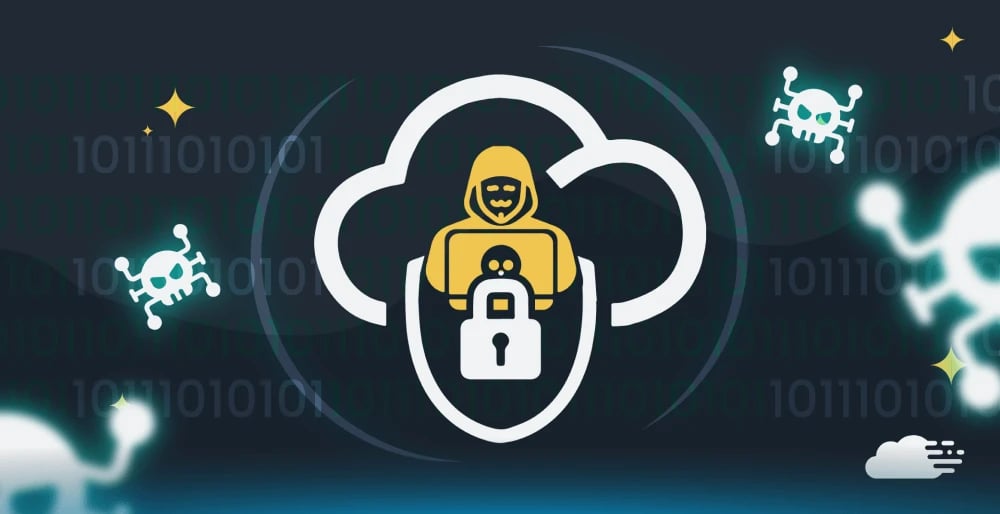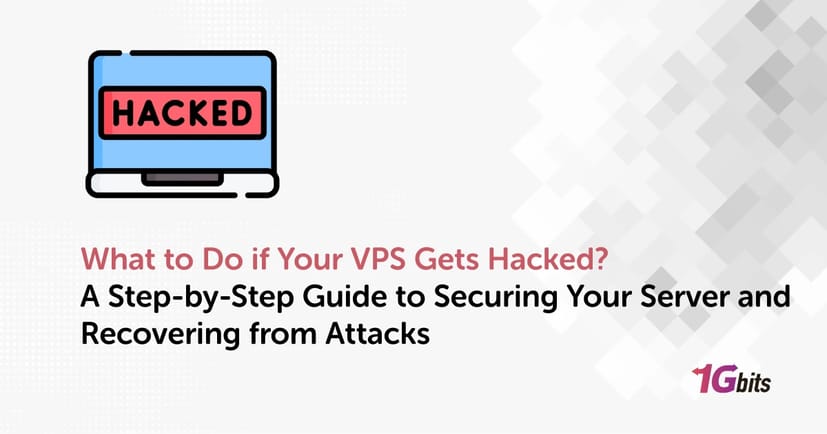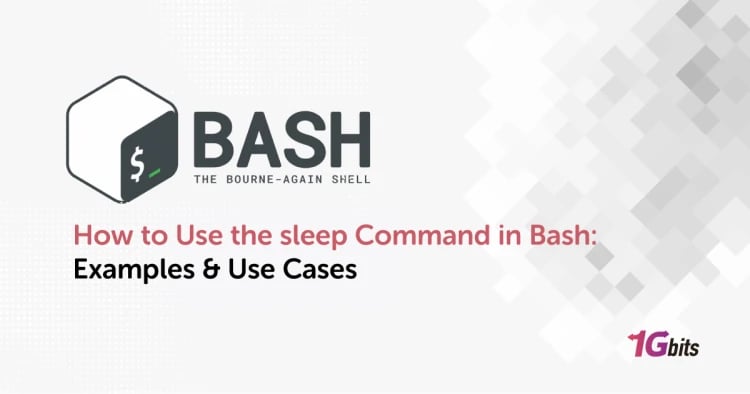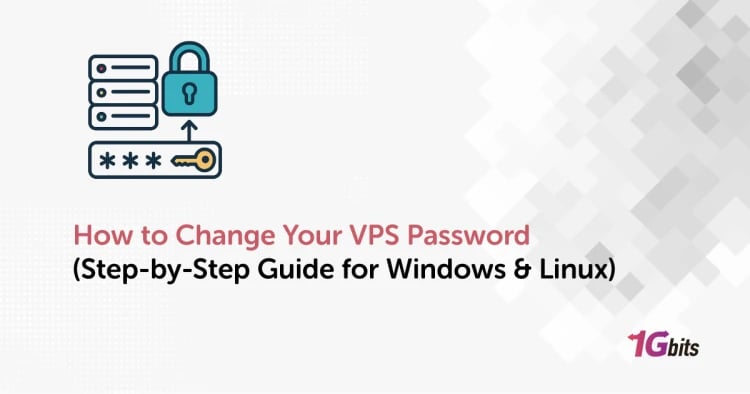What to Do if Your VPS Gets Hacked? is a question no server owner wants to face, but it’s a reality that can occur despite taking precautions. If your VPS gets hacked, immediate action is crucial to minimize damage and restore security. Many wonder, “Can a VPS be hacked?” and the answer, unfortunately, is yes. While VPS hosting offers enhanced security compared to shared hosting, no system is completely immune. When a VPS is hacked, it can lead to data breaches, unauthorized access, and compromised applications. Understanding what to do if VPS gets hacked is vital to recover quickly and prevent future incidents. Asking “Is VPS safe in IT?” highlights the importance of choosing reliable providers and implementing best practices. This guide will explore What to Do if Your VPS Gets Hacked? in detail, ensuring you’re prepared to handle such scenarios effectively. If You need VPS, visit 1Gbits VPS Hosting.
How Can a VPS Server Be Hacked? – Common VPS Vulnerabilities
A Virtual Private Server (VPS) is a reliable and flexible hosting solution, but it is not immune to attacks. Many users ask, "Can VPS be hacked?" Unfortunately, yes, and understanding how it happens is crucial to protect your server. Below, we’ll explore common vulnerabilities, what happens when a VPS is hacked, and most importantly, what to do if your VPS gets hacked. If You need measurement For Security read 5 Essential VPS Security Measures for Small Businesses. Also, need Guidline To Config Firewall for VPS, read How to Configure a Firewall on Your VPS.

Weak Passwords and Authentication
-
Attackers often use brute force attacks to exploit weak or reused passwords.
-
Lack of two-factor authentication (2FA) makes unauthorized access easier.
-
What to do if VPS gets hacked? Immediately change all passwords and enable 2FA for added security.
Unpatched Software and Operating Systems
-
Outdated software contains known vulnerabilities that hackers can exploit.
-
Regular updates and patches are critical to closing these security gaps.
-
What to do if your VPS gets hacked? Update all software to the latest version to prevent recurring attacks.
Open Ports and Misconfigured Firewalls
-
Open ports allow attackers to access your server directly.
-
Poorly configured firewalls fail to block malicious traffic.
-
What to do if VPS gets hacked? Audit firewall rules, close unnecessary ports, and implement strict traffic policies.
Insecure File Transfers and Malware
-
Unsecured file transfers or downloading malicious software can lead to a VPS hacked.
-
Malware can provide attackers with backdoor access to your server.
-
Scan your server regularly and only use secure file transfer protocols like SFTP.
Social Engineering Attacks
-
Hackers use phishing emails or impersonation to trick users into revealing credentials.
-
What to do if your VPS gets hacked? Educate users on recognizing phishing attempts and use anti-phishing measures.
Lack of Monitoring and Intrusion Detection
-
Without regular monitoring, malicious activities can go unnoticed for extended periods.
-
Use monitoring tools to detect unusual activity and respond quickly.
What Happens When a VPS is Hacked?
When a VPS is hacked, attackers can steal sensitive data, deploy ransomware, or disrupt server functionality. Businesses may face financial losses, reputational damage, and downtime. Acting swiftly and knowing what to do if your VPS gets hacked can limit the impact of an attack.
What to Do if Your VPS Gets Hacked?
Step 1: Identify the Attack
When faced with a compromised VPS, the first step is to identify the type and scope of the attack. Proper identification ensures you can mitigate the damage effectively and implement preventive measures. Here's how to approach this critical step and what to do if your VPS gets hacked. If You need Plugin For securing Your VPS, read Top Security Plugins for VPS Users. Also, if you need Guidline, read The Ultimate Beginner’s Guide to VPS Hosting.
Why Is Identifying the Attack Important?
-
Assess the Damage: Understanding the nature of the attack helps evaluate its impact on your VPS.
-
Prevent Further Damage: Quickly identifying the attack vector enables you to isolate the issue and minimize harm.
-
Plan Recovery Steps: Knowing how the attack occurred allows you to choose the right remediation strategies.
-
What to Do if Your VPS Gets Hacked? Start by analyzing logs and suspicious activities to pinpoint the attack vector.

Common Types of Attacks on VPS Servers
-
Brute Force Attacks: Hackers attempt to guess your password to gain root access.
-
Malware or Ransomware Infections: Attackers deploy malicious software to steal data or demand payment.
-
DDoS Attacks: Your VPS is flooded with traffic, causing downtime.
-
Privilege Escalation: A hacker gains unauthorized root privileges by exploiting software vulnerabilities.
-
What to Do if VPS Gets Hacked? Investigate the nature of the attack to determine how the intruder gained access.
Steps to Identify the Attack
1. Analyze Access Logs
-
Review SSH, web server, and application logs for unusual activity.
-
Look for repeated failed login attempts, unexpected IPs, or abnormal access patterns.
-
What to Do if Your VPS Gets Hacked? Use log analysis tools like fail2ban or GoAccess to spot anomalies.
2. Scan for Malware
-
Use tools like ClamAV or rkhunter to detect malicious files or scripts.
-
Check for unusual processes running on the VPS.
-
What to Do if VPS Gets Hacked? Quarantine or delete malicious files and disable any unauthorized processes.
3. Inspect File Modifications
-
Compare current files with recent backups to identify unauthorized changes.
-
Look for suspicious scripts, altered configuration files, or newly created users.
-
What to Do if Your VPS Gets Hacked? Restore altered files from a secure backup after confirming the attack vector.
4. Monitor Network Traffic
-
Analyze traffic logs to detect unusual activity, such as data exfiltration or communication with suspicious IP addresses.
-
Use tools like iftop or Wireshark to monitor outgoing connections.
-
What to Do if VPS Gets Hacked? Block suspicious IPs and limit external traffic while investigating further.
5. Check Software Vulnerabilities
-
Verify that all software and operating systems are updated to their latest versions.
-
Look for known vulnerabilities in outdated applications or plugins.
-
What to Do if Your VPS Gets Hacked? Patch or update software immediately to close security gaps.
6. Search for Unauthorized Accounts
-
Check for new user accounts that were not created by you.
-
Verify account privileges and remove unauthorized users.
-
What to Do if Your VPS Gets Hacked? Disable unauthorized accounts and reset passwords for all existing users.
Properly identifying the attack is the foundation of an effective response plan. By understanding what to do if your VPS gets hacked and following these steps, you can mitigate the damage and strengthen your server against future breaches.
Step 2: Contain the Breach
Once you’ve identified that your VPS has been hacked, the next crucial step is to contain the breach to prevent further damage. Containment involves isolating the compromised server, limiting attacker access, and protecting sensitive data while planning the next steps. Here’s how to effectively contain a breach and what to do if your VPS gets hacked.
Why Containment Is Critical
-
Limits Further Damage: Prevent attackers from escalating their activities or affecting connected systems.
-
Preserves Evidence: Proper containment ensures that logs and attack traces remain intact for analysis.
-
Protects Other Assets: Isolating the VPS minimizes the risk of the attack spreading to other servers or networks.
-
What to Do if Your VPS Gets Hacked? Immediate containment prevents attackers from causing additional harm.
Steps to Contain the Breach
1. Isolate the Compromised VPS
-
Disconnect the VPS from the internet to stop the attack from progressing.
-
Use your hosting provider’s control panel or SSH to disable network access.
-
What to Do if VPS Gets Hacked? Isolation is the first step to limit the attacker’s movements and protect your system.
2. Block Unauthorized Access
-
Change root and user account passwords immediately.
-
Update SSH keys and disable password-based login if not already done.
-
What to Do if Your VPS Gets Hacked? Revoking attacker access is critical to containing the breach.
3. Stop Malicious Processes
-
Use commands like ps aux or top to identify and stop suspicious processes.
-
Kill unauthorized processes or scripts running on the VPS.
-
What to Do if VPS Gets Hacked? Ensure no backdoors or persistent malware remain active during containment.
4. Restrict Network Traffic
-
Set up a firewall to block suspicious IPs and allow only trusted traffic.
-
Use tools like iptables or ufw to implement temporary restrictions.
-
What to Do if VPS Gets Hacked? Controlling network access ensures attackers cannot exfiltrate data or regain control.
5. Secure Other Connected Systems
-
Check for any signs of compromise in related systems, databases, or services.
-
Disable access between the compromised VPS and other servers.
-
What to Do if Your VPS Gets Hacked? Isolate all affected systems to prevent cascading attacks.
6. Backup Data
-
Create a full backup of the current VPS state, including logs and system files, for forensic analysis.
-
Ensure backups are stored securely and are not overwritten by automated systems.
-
What to Do if VPS Gets Hacked? Backing up the compromised system is essential for recovery and investigation.
7. Communicate With Stakeholders
-
Inform your team, hosting provider, and affected clients (if applicable) about the breach.
-
Request assistance from your hosting provider for additional containment measures.
-
What to Do if Your VPS Gets Hacked? Transparency helps coordinate a faster and more effective response.
Containing the breach swiftly and effectively is a vital step in minimizing damage and safeguarding your data. By understanding what to do if your VPS gets hacked and following these steps, you can protect your VPS from further exploitation and prepare for recovery.
Step 3: Change Your Passwords
Changing your passwords is one of the most critical steps after a VPS breach. Weak, reused, or compromised passwords are a common entry point for attackers. By updating credentials immediately and following strong password practices, you can reclaim control and prevent further unauthorized access. Here’s what to do if your VPS gets hacked and why password management matters:
Why Change Passwords?
-
Stops Unauthorized Access: Resetting passwords ensures attackers can no longer use stolen credentials.
-
Mitigates Future Risks: Strong, unique passwords reduce vulnerability to brute-force or credential-stuffing attacks.
-
Supports Containment Efforts: Updating passwords across all accounts prevents lateral movement within your systems.
-
What to Do if Your VPS Gets Hacked? Changing passwords is an essential early step to securing compromised accounts.
Steps to Change Passwords
1. Identify Affected Accounts
-
Focus on root accounts, user accounts, database credentials, and SSH keys.
-
Don’t overlook connected applications or APIs with access to your VPS.
-
What to Do if Your VPS Gets Hacked? Review all accounts that could potentially be exploited.
2. Use Strong Passwords
-
Create complex passwords with at least 12 characters, mixing uppercase, lowercase, numbers, and special characters.
-
Avoid predictable patterns like “password123” or reused credentials.
-
Use a password manager to generate and store secure passwords.
-
What to Do if Your VPS Gets Hacked? Strong passwords are your first defense against future attacks.
3. Update the Root Password
· Use commands like passwd to update the root password securely.
· Ensure no one else can access the root account without authorization.
· What to Do if Your VPS Gets Hacked? Prioritize root password changes to secure administrative access.
4. Rotate SSH Keys
· If attackers gained access via SSH, revoke compromised keys and generate new ones.
· Update your authorized_keys file with the new public keys.
5. Change Database Credentials
· Update passwords for MySQL, PostgreSQL, or other database systems.
· Modify connection strings in applications to reflect the updated credentials.
· What to Do if VPS Gets Hacked? Prevent attackers from exploiting databases for sensitive data.
6. Reset Application Passwords
· Change passwords for CMS platforms, control panels, or any software running on your VPS.
· Ensure any admin or user accounts are secured with strong credentials.
7. Secure External Integrations
· Update API keys and credentials for third-party services connected to your VPS.
· Monitor these services for any unauthorized activity.
· What to Do if VPS Gets Hacked? Ensure that all linked systems are equally secure.
8. Notify Team Members
· Inform team members of the breach and share updated credentials securely.
· Ensure everyone follows strong password policies moving forward.
Best Practices for Password Changes
-
Enable Two-Factor Authentication (2FA): Add an extra layer of security to all accounts.
-
Regularly Rotate Passwords: Schedule periodic password updates to stay ahead of potential threats.
-
Audit Password Strength: Use tools to check for weak or compromised passwords.
Changing your passwords immediately after a VPS breach is one of the most effective ways to secure your system. Understanding what to do if your VPS gets hacked and acting quickly ensures attackers are locked out and cannot exploit your server further. Prioritize password updates to safeguard your data and prevent future breaches.
Step 4: Update Your Software
Keeping your software updated is one of the most effective ways to protect your VPS from security vulnerabilities. Outdated software is a common target for hackers, as older versions may have known exploits. Here’s how to approach this crucial step and what to do if your VPS gets hacked:
Why Update Software?
-
Fix Known Vulnerabilities: Updates patch security flaws that attackers often exploit.
-
Enhance Performance: New versions typically improve stability and efficiency.
-
Ensure Compatibility: Updated software works better with other systems and tools.
-
What to Do if Your VPS Gets Hacked? Begin by reviewing all installed software for outdated versions.
Steps to Update Your Software
1. Audit Installed Software
· Create an inventory of all applications, services, and libraries on your VPS.
· Focus on critical components like the operating system, web servers (e.g., NGINX, Apache), databases, and control panels.
· What to Do if Your VPS Gets Hacked? Identify outdated software that may have been exploited.
2. Apply Security Patches
-
Regularly check for and install security updates from trusted sources.
-
For Linux distributions, use package managers like apt, yum, or dnf to update software.
-
Example for Ubuntu/Debian: sudo apt update && sudo apt upgrade
-
Example for CentOS/RHEL: sudo yum update
o What to Do if Your VPS Gets Hacked? Security patches are essential to close vulnerabilities.
3. Upgrade CMS Platforms and Plugins
· Update content management systems (e.g., WordPress, Joomla) to the latest versions.
· Ensure all plugins and themes are also updated, as these are common attack points.
4. Update System Libraries and Frameworks
· Check and update software frameworks like PHP, Python, or Node.js.
· Ensure system libraries (e.g., OpenSSL) are up-to-date.
· What to Do if Your VPS Gets Hacked? Prevent attackers from exploiting outdated dependencies.
5. Automate Updates Where Possible
· Enable automatic updates for essential software to ensure you’re always running the latest versions.
· Use tools like unattended-upgrades for Ubuntu or automatic dnf updates for Fedora/CentOS.
Best Practices for Updating Software
-
Test Updates: In staging environments, test updates to avoid unexpected issues in production.
-
Monitor for Vulnerabilities: Subscribe to security mailing lists or monitoring tools for alerts about new exploits.
-
Document Changes: Keep a record of all updates to track what’s been patched.
Step 5: Remove Malware and Backdoors

When a VPS gets hacked, removing malware and backdoors is critical to restoring the server's integrity and preventing further exploitation. Attackers often leave malicious code or hidden access points to regain control of your system. Here's a detailed guide on what to do if your VPS gets hacked and how to eliminate malware and backdoors effectively:
Why Remove Malware and Backdoors?
-
Protect System Integrity: Malware can compromise data, degrade performance, and enable unauthorized access.
-
Prevent Reinfection: Backdoors allow attackers to regain access even after the initial breach is mitigated.
-
Ensure Security Compliance: Clean systems are essential for meeting compliance standards and avoiding penalties.
-
What to Do if Your VPS Gets Hacked? Focus on identifying and removing all traces of malicious activity.
Steps to Remove Malware and Backdoors
1. Scan for Malware
· Use security tools like ClamAV, Maldet, or Chkrootkit to scan your VPS for malicious files.
· Employ real-time antivirus solutions to identify active threats.
· What to Do if Your VPS Gets Hacked? A comprehensive malware scan is the first step to identifying compromised components.
2. Analyze Logs and Activities
· Review system logs in /var/log to identify unusual activity, such as unauthorized logins or file modifications.
· Look for unexpected cron jobs, running processes, or outbound connections.
· What to Do if Your VPS Gets Hacked? Logs often reveal hidden backdoors or malware behavior.
3. Isolate Infected Files
· Quarantine or delete suspicious files flagged during the malware scan.
· Focus on common attack points, such as web directories (/var/www), temporary folders (/tmp), and configuration files.
· What to Do if VPS Gets Hacked? Remove infected files cautiously to avoid system instability.
4. Check and Clean Critical Components
· Web Applications: Inspect CMS platforms, plugins, and themes for injected malicious scripts.
· SSH Configurations: Review the ~/.ssh/authorized_keys file for unauthorized keys.
· Rootkits: Use tools like rkhunter to detect and eliminate rootkits that provide attackers hidden access.
· What to Do if Your VPS Gets Hacked? Securing critical components ensures attackers can’t reenter the system.
5. Remove Unauthorized Users
· List user accounts using cat /etc/passwd and disable or delete unauthorized accounts.
· Check for escalated privileges in the sudoers file.
· What to Do if VPS Gets Hacked? Eliminating rogue accounts closes potential backdoors.
6. Harden System Configuration
· Review and reset file and folder permissions to prevent unauthorized access.
· Verify firewall rules and block unauthorized IPs using tools like UFW or iptables.
· What to Do if Your VPS Gets Hacked? Tightening configurations reduces the attack surface.
-
Reinstall Critical Software
· If key services or applications were compromised, reinstall them from official repositories.
· Compare system binaries against known safe versions to ensure no tampering.
· What to Do if VPS Gets Hacked? Clean installations help restore trust in critical software.
Post-Cleanup Actions
-
Set Up Intrusion Detection Systems (IDS): Tools like Fail2Ban or OSSEC monitor for suspicious activity and block unauthorized access attempts.
-
Regular Backups: Keep clean backups stored securely to recover quickly if reinfection occurs.
-
Monitor Traffic and Processes: Use tools like Netstat or ps to keep an eye on system activity for signs of compromise.
-
What to Do if Your VPS Gets Hacked? Continuous monitoring ensures the server remains clean and secure.
Best Practices for Avoiding Malware Reinfection
-
Update Regularly: Ensure the operating system, software, and plugins are up-to-date to prevent known vulnerabilities.
-
Enforce Strong Access Controls: Use strong passwords, enable two-factor authentication, and restrict SSH access.
-
Scan Periodically: Schedule regular malware scans to catch any future infections early.
By diligently removing malware and backdoors, you restore the integrity and security of your VPS. Knowing what to do if your VPS gets hacked ensures your system is free from hidden threats and better protected against future breaches. Take a proactive approach to monitoring and maintenance to keep your VPS safe.
Step 6: Restore From a Backup
If your VPS gets hacked, restoring from a backup is a crucial step in recovering your system. A clean, secure backup can help you quickly return to a working state, ensuring that any damage caused by the attack is reversed. Here’s what to do if your VPS gets hacked and how to restore from a backup effectively:
1. Verify the Backup’s Integrity
· Before restoring, ensure that the backup is not compromised. A backup made after the attack may contain malware or other threats.
· What to Do if Your VPS Gets Hacked? Verify that the backup was taken before the breach to avoid restoring infected data.
2. Identify the Backup Location
· Locate the most recent, clean backup, whether it’s stored locally or on a cloud storage service.
· What to Do if Your VPS Gets Hacked? Ensure you have access to secure backup copies that are uncorrupted and up-to-date.
3. Restore System Files and Applications
· Use backup restoration tools to restore the operating system, applications, and data.
· Focus on critical components first, such as web services, databases, and configuration files.
· What to Do if VPS Gets Hacked? Ensure all system files are replaced with safe versions from the backup.
4. Test the Restored System
· After restoring, test the system for any signs of further compromise. Ensure all applications and services are functioning properly.
· What to Do if Your VPS Gets Hacked? Testing ensures that the restored VPS is secure and operating as expected.
5. Monitor for Future Attacks
· After restoration, enhance security measures and monitor the VPS for unusual activities to prevent future breaches.
· What to Do if VPS Gets Hacked? Monitoring helps detect and prevent re-infection.
Restoring from a backup is a powerful way to recover after a hack. It ensures that your VPS is returned to a secure, functional state.
Step 7: Monitor Your VPS
After a VPS gets hacked, it’s crucial to continuously monitor the system to ensure no further malicious activity takes place. Monitoring helps detect signs of reinfection or unauthorized access, ensuring your VPS remains secure. Here's what to do if your VPS gets hacked and how to effectively monitor it:
Enable Intrusion Detection Systems (IDS)
· Use tools like Fail2Ban, OSSEC, or AIDE to detect suspicious activity or changes in system files.
· What to Do if Your VPS Gets Hacked? An IDS can alert you to potential threats and prevent further intrusions.
Monitor System Logs Regularly
· Check logs in /var/log and other critical locations for unusual login attempts, file changes, or unauthorized access.
· What to Do if VPS Gets Hacked? Frequent log monitoring helps identify any signs of continued malicious activity.
Track Network Traffic
· Use tools like Netstat or Wireshark to monitor outgoing and incoming network connections for any abnormal behavior.
· What to Do if Your VPS Gets Hacked? Monitoring network traffic helps identify data exfiltration or unauthorized connections.
Set Up Alerts for Unusual Activities
· Configure alerts for events like unauthorized logins, abnormal traffic spikes, or changes to sensitive files.
· What to Do if Your VPS Gets Hacked? Alerts allow you to respond quickly to potential threats, minimizing damage.
Review User and File Permissions
· Regularly audit user accounts, file permissions, and SSH configurations to prevent unauthorized access.
· What to Do if Your VPS Gets Hacked? Auditing ensures that only authorized users have access to critical system components.
Ongoing monitoring is vital to maintaining the security of your VPS. What to do if your VPS gets hacked is not just about recovery; it’s about preventing future breaches.
Conclusion
In conclusion, knowing what to do if your VPS gets hacked is essential for minimizing damage and restoring security. Immediate steps such as identifying the attack, containing the breach, changing passwords, and removing malware are critical. Additionally, restoring from a clean backup, monitoring your system, and continuously improving security measures are vital for long-term protection. By following these procedures, you can not only recover from the attack but also strengthen your VPS against future threats. Remember, staying vigilant and proactive is the key to ensuring your VPS remains secure and resilient to hacking attempts.









